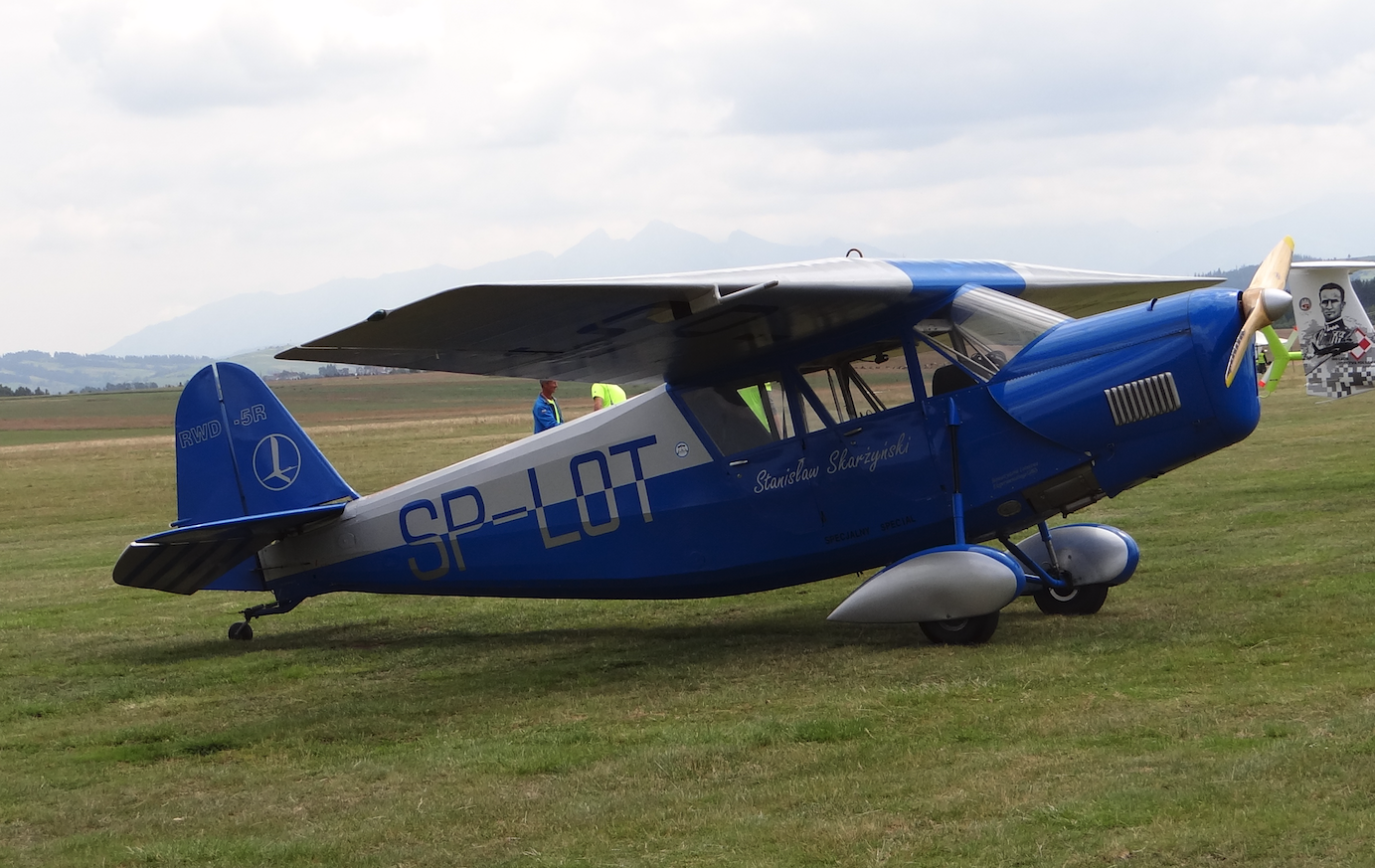Kraków 2013-03-14
Outline of the history of navigation. Flights of Polish Aviators.
When recalling the first flights across the Atlantic Ocean, it is necessary to mention the Polish attempts to achieve such a feat. On August 3, 1928, pilots Ludwik Idzikowski and Kazimierz Kubala attempted to fly across the Atlantic from east to west. The pilots had at their disposal the Amiot 123 aircraft. After taking off from Paris, after covering 5,200 km and after 31 hours of flight, they were forced to ditch. Everything ended happily. The pilots did not get discouraged and the following year, on July 13, 1929, they made a second attempt. Unfortunately. During a forced landing on the island of Graciosa in the Azores, a crash occurred, in which Ludwik Idzikowski died.
Bolesław Orliński and Leon Kubiak. 1926
From August 27, 1926 to September 25, 1926, on a Bréguet 19 A2 aircraft, Bolesław Orliński and mechanic Leon Kubiak (both officers of the Polish Army) made a multi-stage flight from Warsaw to Tokyo, on a route of 10,300 km. The pilots prepared very carefully for the feat. They received full assistance from their superiors. In order not to burden the aircraft, they did not take parachutes or life jackets. They only took very warm suits, because the aircraft has an open cockpit. The takeoff took place from Mokotów Airport (Pole Mokotowskie) in Warsaw, at about 5:00. The pilots covered 10,120 km in 8 stages. The longest stage was 1,900 km. The first dramatic situation took place over the Sea of Japan, when a strong wind pushed them back over the sea. Only thanks to the pilot’s experience did they manage to fly to the beach on the last of the fuel. The landing in Tokyo took place on September 5, 1926. In Japan, the Polish pilots were received enthusiastically. For the flight, Orliński received the Japanese Imperial Order of the Rising Sun, VI Class, and the Gold Medal of the Imperial Aeronautical Society. Japan did not forget about Leon Kubiak, who was also appropriately honored. The return flight was also full of dramatic situations. In the area of the Sino-Soviet border, the oil pressure dropped suddenly and it was necessary to land immediately. The leak was quickly repaired. But there was a problem with the lack of oil. Additionally, there were filings on the oil filter, which meant that the engine could not operate at full power. Oil was obtained from a settlement located 260 km from the place of the forced landing. When further actions were being considered, the wind intensified. The plane had to be anchored, but they didn’t have time to do it and the propeller and lower left wing were damaged by a nearby fence. The propeller was repaired using a homemade method – a stick and wire. The broken wing could not be repaired. So it was cut off. For balance, the covering was removed from the other side. Local women helped sew up the perforated covering in other parts of the wing. It was 6,680 km to home. The Polish officers were not lacking in determination. After momentary doubts, they took the risk of continuing the flight to Warsaw. On September 25, 1926, they landed in Warsaw. In almost 121 hours they covered the entire route, which is 20,150 km. The authorities of the Second Polish Republic honored our pilots. They were received by the President of the Republic of Poland and decorated. Both were promoted. Bolesław Orliński to the rank of captain. For his flight he also received from the city of Warsaw a plot of land at 94 Racławicka Street near Fort Mokotów, where he built his house.
Bolesław Orliński is one of those whom the communists wanted to erase from the memory of the Nation. Bolesław Orliński took part in the Polish-Russian War of 1920. He fought in the Polish Air Force in the West against the Germans during World War II. Bolesław made 49 combat missions. After the war, unable to return to Poland, he emigrated to Canada. Bolesław Orliński died on February 28, 1992, outside Poland. His ashes and those of his wife were brought to Poland and buried in the cemetery of the Church of the Holy Family in Wrocław with military ceremony. Bolesław Orliński is the patron of the Wrocław Aeroclub. He lent his name to the disbanded 11th Fighter Aviation Regiment from Wrocław.
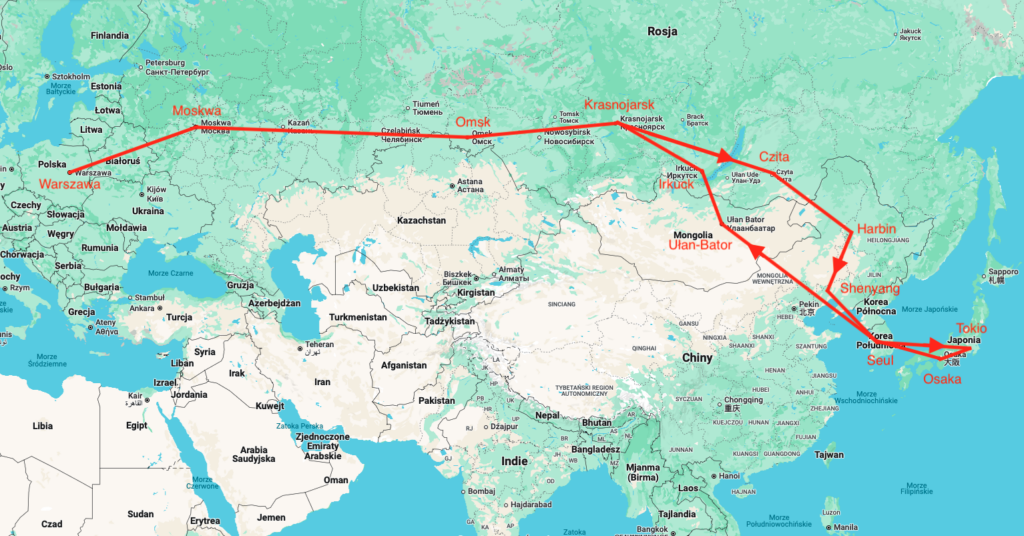
Period 1925 – 1935.
In the period 1925-1930, several designs of aircraft were created, which we can define as; business, tourist or liaison. These aircraft were used to transport from 2 to 6 people, including the pilot. They were of mixed construction, powered by one engine with a power of 100-200 HP. They rarely exceeded a speed of 150 km/h in flight. Their range did not exceed 300 km. They were simple in construction and operation. The first airlines (mail and passenger) initially showed interest in them. However, their small load capacity and range, as well as exceptional susceptibility to weather conditions, drastically limited the possibility of their operation. When flying against the wind, the forward speed could decrease to 50-60 km/h, which made it impossible to reach the destination.
In 1926, the first permanent air connection on the New York – Chicago route was launched using this type of aircraft. Of course, in stages. In 1927, the longest permanent air connection New York – Los Angeles was established.
One such aircraft was the Fairchild FC-2W (1927). The aircraft were purchased by, among others, the Pan American airline. This aircraft was used as a passenger aircraft, for example, on the Chicago-Atlanta route in 1928 and 1929. Already in 1929, these aircraft were sold by airlines and found many willing private owners or were sent abroad.
PWS-20.
Polish passenger plane PWS-20 T. The PWS-20 design was the first Polish passenger plane. In the second half of 1927, the Ministry of Communications announced a competition for an eight-seater (2 crew and 6 passengers) passenger plane. The competition was decided on December 10, 1928. The winner was the PWS-20 designed by engineer Zbysław Ciołkosz. In 1928, the Podlasie Aircraft Factory, thanks to financial support from the Air and Anti-Gas Defense League, began building three prototypes. The first prototype PWS-20 T, which was named “Gniezno”, was flown with a ski landing gear on March 12, 1929. After tests at IBTL and LOT Polish Airlines, the plane returned to the factory, where it received a wider track landing gear, improved engine cooling and exhaust pipes, and a modified passenger cabin. After modification in 1930, the aircraft received the designation PWS-20 bis and registration marks SP-AAZ and was transferred to PLL LOT for testing. In 1930, a second SP-AAY was made, also transferred to PLL LOT. During the tests, the aircraft were used to transport goods. Engineer Zbysław Ciołkosz expected the PWS-20 aircraft to be used to fly across the Atlantic Ocean. After installing additional tanks, the aircraft could have a range of 6,450 km. It was planned to be possible to place the aircraft on floats in order to use it for air transport with Denmark and Sweden.
T-T PWS-20 data: Wingspan 17.6 m, length 12.67 m, height 3.71 m, load-bearing area 52.9 m2. Empty weight 1,850 kg, total weight 3,200 kg. Maximum speed 178 km/h, cruising speed 160 km/h, ceiling 3,800 m, range 800 km.
PWS-24.
PWS-24 is another Polish passenger plane of the Podlasie Aircraft Factory. The first one produced in series. The first flight took place on August 1, 1931. Introduced to the status of PLL LOT. The plane took 6 passengers on board. The crew consisted of 2 pilots. In addition to commercial flights, it was used for photometric tasks. Serially powered by the Lorraine Algol engine, with a power of 220 kW (300 hp). In 1934, the Pratt & Whitney Wasp Junior engine, with a power of 294 kW (400 hp), was used, and the planes were designated PWS-24 bis.
Lublin R-X.
On August 25, 1929, the Lublin R-X aircraft with its crew; pilot Wacław Markowski and mechanic B. Weman flew non-stop from Poznań to Barcelona. They covered the distance of 1,800 km in 12 hours and 15 minutes.
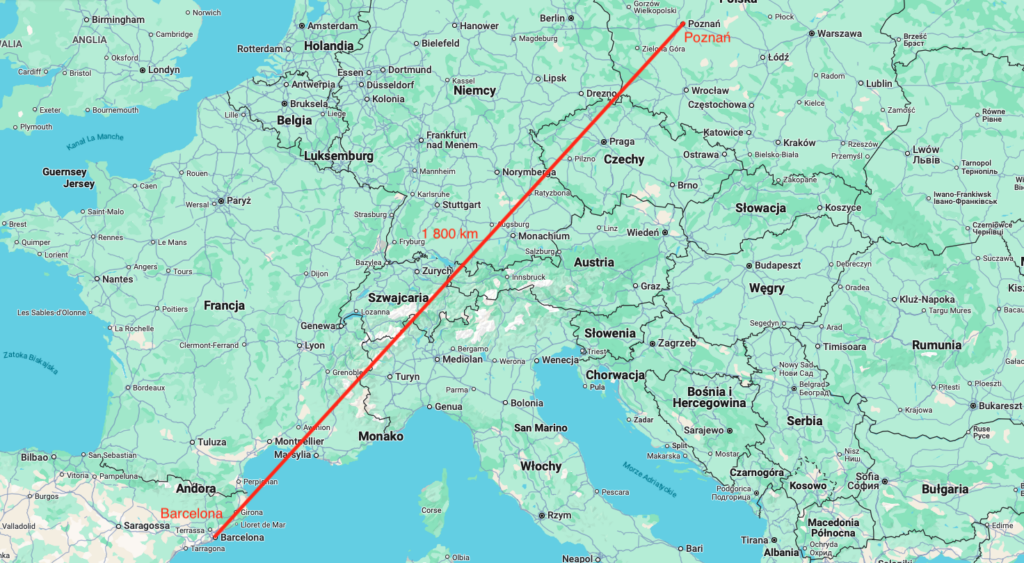
Successes of Stanisław Skarżyński. 1931
Stanisław Jakub Skarżyński is one of the most distinguished Polish pilots in the history of world aviation. Colonel pilot of the Polish Army. It is difficult to list all of his achievements in this short article. Therefore, we will focus on two of his feats.
Between February 1, 1931, and May 5, 1931, together with Lieutenant Andrzej Markiewicz, he completed a rally around Africa in a Polish PZL Ł.2 (SP-AFA) aircraft, covering a distance of 25,770 km. The flight route included, among others; Warsaw, Belgrade, Athens, Cairo, Khartoum, Kisumu, Abercon, Elisabethville, Luebo, Léopoldville, Lagos, Abidjan, Bamako, Dakar, Port Etienne, Agadir, Villa Cisneros, Casablanca, Alicante and Paris. The flight was rife with problems with the engine, which was dismantled from the airframe twice. Near the town of Ribérac in France, a piston in the cylinder broke off and Skarżyński made a difficult emergency landing on a slope, in a clearing among wooded hills. However, he decided not to replace the seriously damaged engine, he wanted to return on the same, repaired engine.
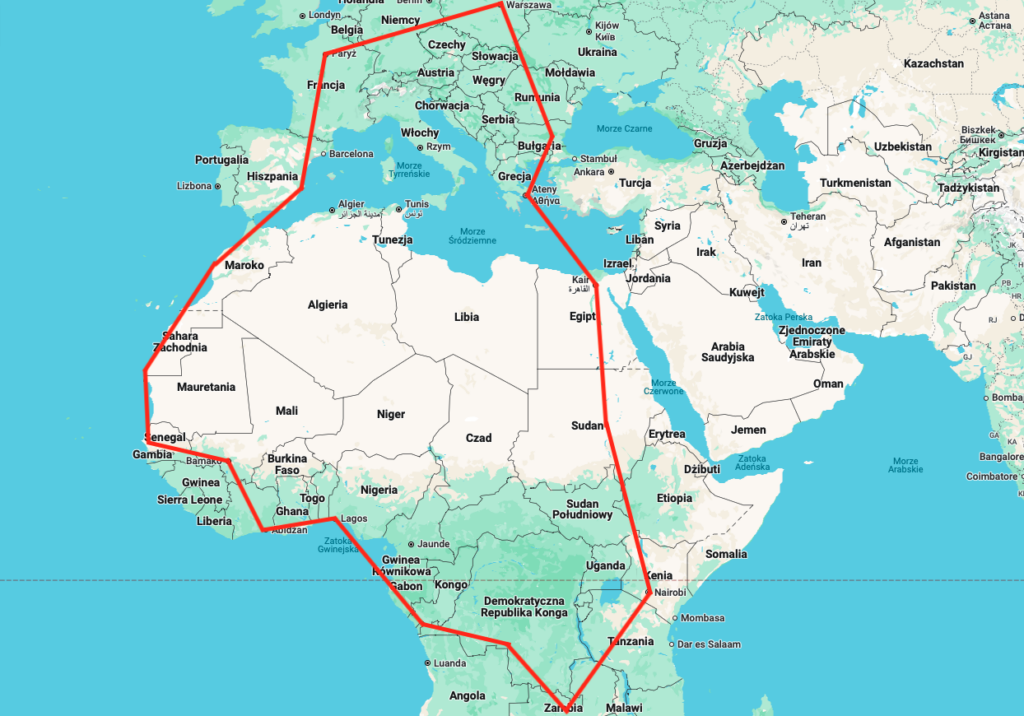
On May 8, 1933, in a single-seater Polish-built plane, RWD-5bis (marking SP-AJU), converted from a tourist plane, Stanisław Skarżyński was the first Pole to fly across the Atlantic Ocean – from the west coast of Africa (Saint Louis in Senegal) to Maceió in Brazil. He took off on May 7, 1933, at 11:00 p.m. The flight lasted 20 hours 30 minutes, of which 17 hours 15 minutes over the ocean. In this way – with a result of 3,582 km – he set an international distance record in class II tourist planes, with an empty weight of up to 450 kg. The fact that Skarżyński flew in a suit, not a pilot’s jumpsuit, has become legendary. For his feat, he received the Louis Blériot Medal from the Fédération Aéronautique Internationale (FAI) in 1936, awarded for records (speed, altitude, flight distance) in light aviation. The flight over the South Atlantic was a stage on the Warsaw-Rio de Janeiro route, completed between 27 April and 24 June 1933. He also visited other cities in Brazil, enthusiastically welcomed by the locals, especially the Polish communities. Then he flew to his compatriots in Buenos Aires. He returned to Europe by ship with his record-breaking plane, and in it – from Boulogne, France – he flew to Warsaw (with a stopover at Lublinek airport, where he was greeted by his wife, among others), ending on 2 August 1933 a rally with a total distance of 18,305 (17,885) km.
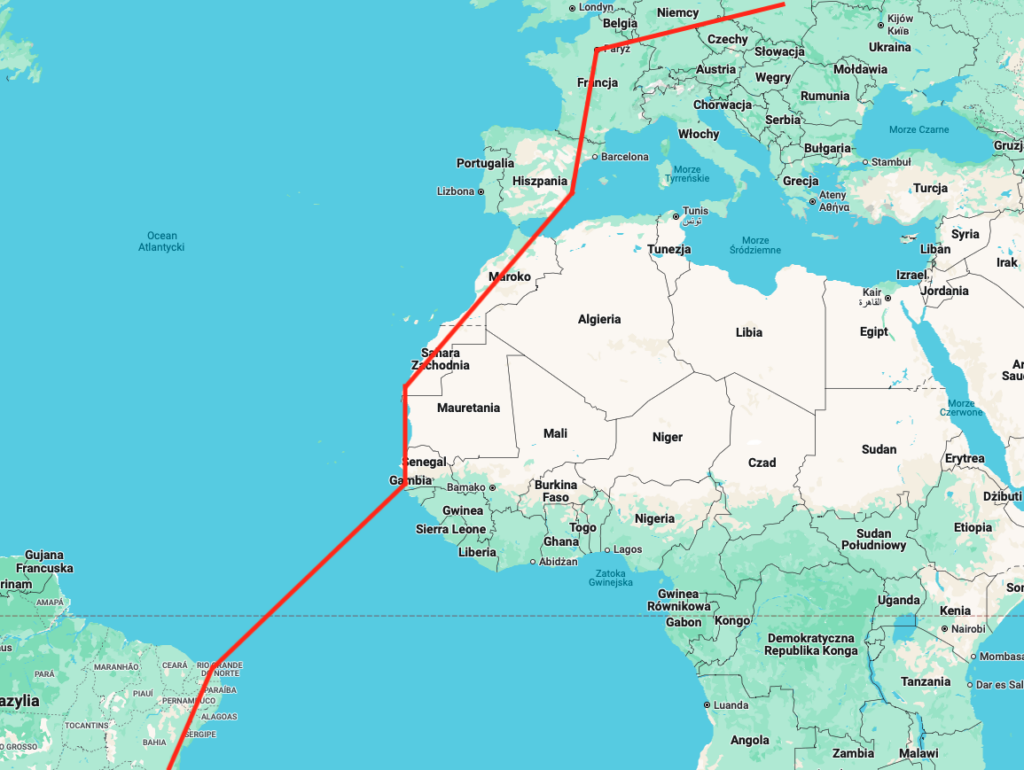
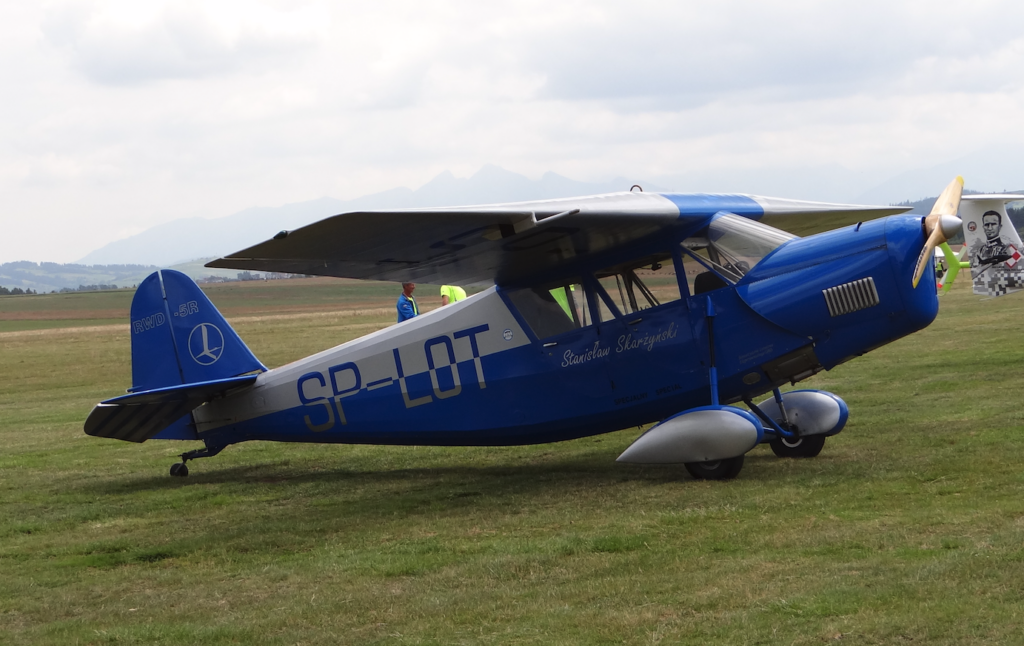
Written by Karol Placha Hetman

